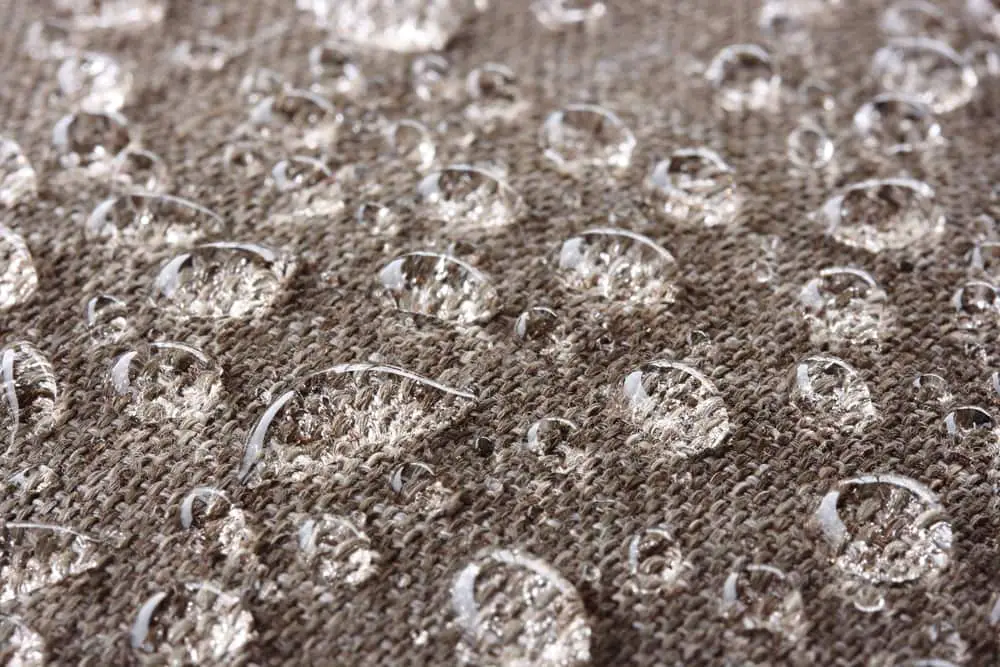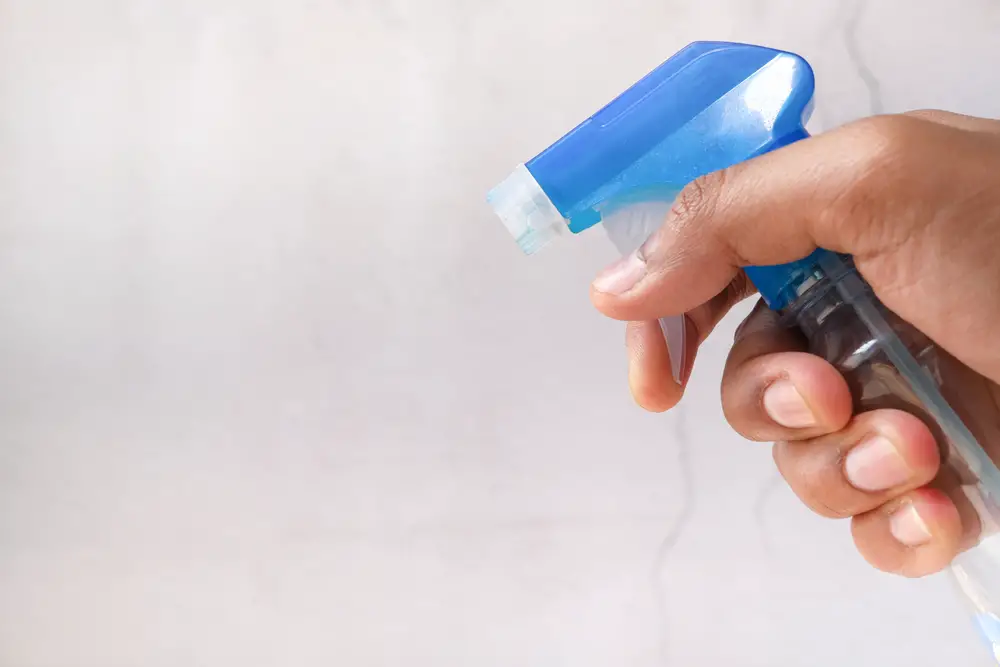Are waterproof outdoor pillows necessary for patio furniture? For those wondering what type of pillow or cushion to invest in for your outdoor space, you will never regret buying waterproof ones. We discuss three reasons why you should consider waterproofing as well as the differences between weatherproof and waterproof.
Waterproof Outdoor Pillows: Weatherproof vs. Waterproof vs. Water-Resistant
There is a difference when referencing weatherproof and waterproof. Each term indicates something different when dealing with the material. It is essential to know the difference between the two to make an informed decision when buying the best outdoor pillows for your patio.
Weatherproof
Weatherproof pillows are UV-, water-, and wind-resistant. However, they are not fully waterproof. Experts recommend covering or storing them during a downpour or poor weather. Reading the care instructions on the tag will provide the best way to care for the outdoor pillows and help them last longer. They will also indicate the waterproofing level.
Waterproof
Waterproof materials tend to repel moisture. You will see it bead up when moisture encounters the material. They are also either treated, have sealed seams, or both. The best way to learn whether it is waterproof or weatherproof is to splash the pillow with water. If water beads form, then it repels or resists water.
Water-resistant
Water-resistant is not the same as waterproof. In waterproof material – any waterproof material – the seams are treated. It will have either a unique product sealing the seams or a way of making them airtight. Water will not get into these pillows. Water-resistant pillows are treated and will repel water, but some moisture may get in at the seams as this area is untreated.
It is difficult to tell the difference between weatherproof, waterproof, and water-resistant at a glance. You may have to do some research to find out, or you may have to reach out to the manufacturer to obtain the necessary details. Most often, labels will indicate what material you are dealing with.
Waterproof and Water-resistant Outdoor Pillows and Cushions: What to Look For

No one wants to sit on a damp cushion. If you want your cushions to repel water, find ones that use a hydrophobic finish or contain a water-repellent property.
This will allow you and your guests to be comfortable outdoors and is a must if the pillows or cushions are poolside. They will quickly become damp from the splashing of water or people drying off. Be sure they are UV-resistant as well, as this will reduce fading.
Quick Dry Foam
The type of foam is essential for outdoor pillows. Quick-dry foam is the best for outdoor pillows and cushions since it is high-performance foam. It has a quick drying process due to its larger pores that drain water away from fabric or material, allowing for improved air circulation.
Polyester Fabric
Polyester fabrics are made from petroleum. Petroleum undergoes polymerization, spinning, and extruding along with polyester filaments. The material doesn’t tear easily, is durable, and resists stains and moisture.
Synthetic Fabric
Acrylic fabrics are synthetic fibers. They contain coal-based or petroleum compounds. Acrylonitrile (a polymer) forms acrylic resin pellets and is what produces the material. Then, the yarn becomes spurned while in the process. Acrylic materials are easy to clean and rain-resistant. They wick moisture away, making them the perfect choice for the outdoors.
Three Benefits to Waterproof Outdoor Pillows
If your patio contains lounging areas, outdoor seating, or dining areas, you may wonder if waterproof cushions are essential. There are benefits to these cushions, and we discuss why they are necessary.
- Durable and Long-lasting. Compared to cushions that aren’t water-resistant, a waterproof cushion will retain its quality and be longer-lasting. Cushions composed of acrylic canvas, for example, will not only resist water but won’t rot or be prone to mildew when damp.
- Stress-free. The weather can be very unpredictable, and sometimes we forget when rain is in the forecast. When it starts to pour, with cushions that aren’t waterproof, you may find yourself quickly dashing outside to save them before the rain soaks in. High-quality pillows will never cause worry when placed outdoors in a light shower.
- Versatility. Waterproof cushions allow for greater freedom and control about where to place them. You may put them by the pool earlier in the day and have them serve double-duty as a chair cushion around dinner time. The choice is yours. These cushions can withstand the wetness from a pool but will quickly dry, allowing you to move them around.
When selecting an outdoor cushion, it is advisable to ensure it is UV-resistant. Many pillows are left out in the sun for prolonged periods. They tend to fade in color if they are not treated. Materials that will not fade quickly when exposed to sunlight are made of acrylic canvas.
Can You Waterproof Fabric for Patio Furniture?

Dining cushions, along with outdoor rugs, benefit from waterproofing. It will help you to retain the fabric’s quality, as waterproofing can decrease over time. By treating them, you will extend their life. Use a waterproofing spray, make your own, or put the cushions in the washer and dryer.
You can make an easy, do-it-yourself spray at home. However, if you are unsure what to use, select a spray designed for sailboat textiles.
When using the spray, protect yourself. Wear gloves and follow the instructions on the label to ensure you are kept safe. Before spraying the furniture, inspect all material for stains or holes. If there are holes, first patch them. For stains, spot-clean them.
1. Vacuum Seams
Select the upholstery attachment on your vacuum and vacuum over the entire surface of the pillow. Pay close attention to crevices and seams as they house most of the debris and dirt. Also, be mindful of decorative elements or buttons.
2. Clean Them
There are two ways you can clean your pillows. The first is removing the outside cover after vacuuming and placing it in the washer. The other is to apply a DIY spray if you cannot remove the cover.
Wash Them Before Storage
Some cushions will allow you to wash them in a washing machine, but this isn’t always the case. Read the instructions for what you can do to the pillows. Failure to do so can either result in your cushions deteriorating or, in some cases, becoming flammable in the presence of heat.
Wash Using a DIY Wash
For a DIY wash, mix one tablespoon of dish detergent with ¼ cup of Borax in a bucket of water. Always select an area away from plants, people, and pets when you spray/wash your pillows.
If using a brush, dip it in the solution, then scrub the cushions’ surface. You may have to go back to specific areas that are heavily soiled, matted, or that require additional treatment. Allow five minutes to lapse, allowing your solution to soak the cushion thoroughly.
Using a DIY Spray
You can also clean cushions with vinegar. All you need to do is place ¼ cup of distilled white vinegar in 4 cups of warm water. Pour the mixture into a spray bottle. If spraying, go over the entire surface, including buttons and seams.
When using this method, allow your solution to rest for 15 minutes. Then, scrub the stained areas using a soft brush. Then, proceed to step four.
3. Rinse Your Pillows with a Garden Hose
Rinse the cushions with a medium-high pressure garden hose. Be sure you remove all of the cleaning solution. Refrain from using a pressure washer as it may damage the fabric.
4. Allow Them to Fully Dry
Squeeze out excess water using your hands. Blot fabric using a clean towel to soak up moisture. Prop your cushions vertically, allowing them to air dry thoroughly. Putting them in direct sunlight will speed up the process. Ensure they are completely dry before putting them back on your furniture.
5. Protect the Cushions or Pillows
After the pillows are thoroughly cleaned, you can apply a protective spray. Do this at least once a year as the coating can wear off. Many sprays protect against UVA/UVB rays in addition to protecting the item against the elements.
All you do is spray it on the outside. It is a simple application that only involves one step. Most tend not to leave a lingering odor behind, and they will resist any yellowing. Pay attention to the directions, as how much to use will depend on the density of the fabric.
How Do I Remove Stains?
It is best to treat any stains as soon as they occur. These instructions can be used as a guide when dealing with certain common stains.
- Tree Sap. Use an enzyme-based stain remover for this type of stain as it is tricky to remove successfully. Sprinkle powdered detergent on top of the remover to generate a paste. Scrub the area gently using a brush, then rinse with hot water. Should there be any discoloration, use oxygen bleach to restore color.
- Oil Stain. You can get greasy stains from insect spray, sunscreen, and food. They can be quickly removed by placing baking soda or cornstarch on the area for 15 minutes, allowing the product to absorb the oil. Then, you can scrape it off with any straight edge. Repeat until the stain vanishes.
- Mildew/Mold. Brush the mildew or mold away before treating it. Do this outside to prevent spores from spreading to other areas. Spray the area with distilled undiluted white vinegar. Wait 10 minutes to treat the area before rinsing.
If the stain is stubborn, put a cloth soaked in vinegar over the location. Scrub the area with a brush and clean using a sponge dipped in a bit of detergent and water. Then, rinse and air dry.

Some outdoor cushions and pillows are specially treated with a coating that resists stains and water. As mentioned, you will need to replenish the protective coating by using a fabric spray (Scotchgard Sun and Water Shield) to protect them.
Always make sure the cushions are thoroughly cleaned before protecting them. Otherwise, all you will end up doing is potentially sealing in a stain.
Summary
The benefits of waterproof outdoor pillows are many. It will prolong the lifespan of your cushions, making them last longer. You’ll have less concern should it suddenly rain than you would with fabrics that are not protected.
When you place an item outdoors, it is always advisable to ensure it is waterproof. While these pillows may cost more, you will never worry about them becoming damaged.






